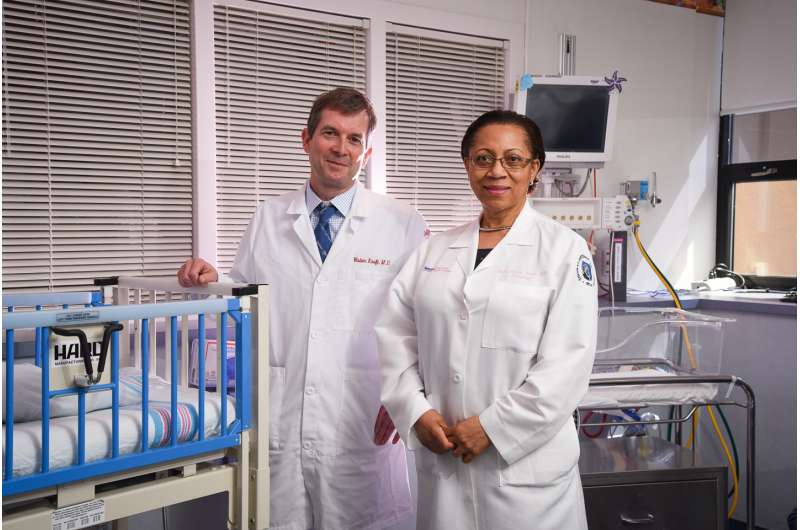Buprenorphine cuts neonatal abstinence syndrome treatment length by nearly half

Findings of a phase 3 clinical trial being presented at the 2017 Pediatric Academic Societies Meeting show that buprenorphine is just as safe and more effective than morphine when used to treat newborns suffering withdrawal symptoms after prenatal drug exposure.
Researchers will present the study, "A Randomized Controlled Trial of Sublingual Buprenorphine for the Treatment of the Neonatal Abstinence Syndrome," on Sunday, May 7, at the Moscone West Convention Center in San Francisco. The randomized controlled trial known as B-BORN (Blinded Buprenorphine OR Neonatal morphine solution trial) will be published online in the New England Journal of Medicine on May 4.
More than half of infants exposed to opioids during pregnancy require pharmacologic treatment for withdrawal symptoms of neonatal abstinence syndrome, such as seizures and respiratory and digestive problems, that make it difficult for them to adequately eat and sleep. Traditional treatment for these newborns, most often with morphine, requires lengthy hospital stays.
The B-BORN study followed up earlier-phase clinical trials that suggested buprenorphine could reduce the length of treatment and hospitalization needed for babies with neonatal abstinence syndrome. Researchers enrolled 63 infants who were born exposed to opioids—97 percent of whom were exposed to methadone. They compared sublingual buprenorphine to oral morphine treatment outcomes and found similarly promising results.
"This study has large public health implications, since the rate of neonatal abstinence has increased almost 5-fold over the past 15 years," said lead author Walter Kraft, MD, Professor of Pharmacology, Medicine & Surgery at Thomas Jefferson University. In some hospitals, he said, NAS accounts for more than 20 percent of all days patients spend in the neonatal intensive care unit.
Buprenorphine was associated with a 42 percent decrease in the length of treatment compared to standard morphine, according to the trial. Average length of treatment needed for babies given buprenorphine was 15 days compared with 28 days using morphine, he said, while length of hospital stays for babies treated with buprenorphine averaged 21 days, versus 34.5 days for those treated with morphine.
In addition, Dr. Kraft said, there were no readmissions or increased need for "rescue" therapy with phenobarbital when symptoms didn't initially subside. Buprenorphine has a well-established safety record in adults, he said, and no safety issue was identified in this trial. Babies' respiratory rate, liver function and other health indicators, for example, were similar in both groups.
"Our findings provide evidence that buprenorphine can safely and effectively serve to reduce the significant burden of neonatal abstinence syndrome on individual infants and families, and hospitals," he said.
Dr. Kraft will present the study, "A Randomized Controlled Trial of Sublingual Buprenorphine for the Treatment of the Neonatal Abstinence Syndrome," at 8:45 a.m. Sunday May 7.
More information: Walter K. Kraft et al, Buprenorphine for the Treatment of the Neonatal Abstinence Syndrome, New England Journal of Medicine (2017). DOI: 10.1056/NEJMoa1614835















